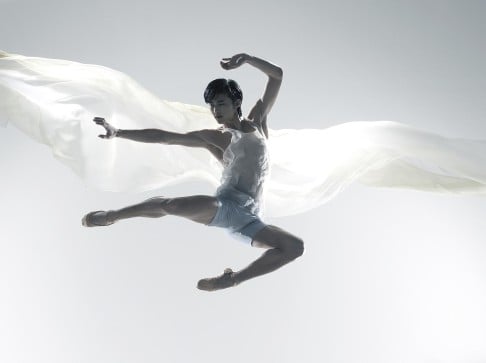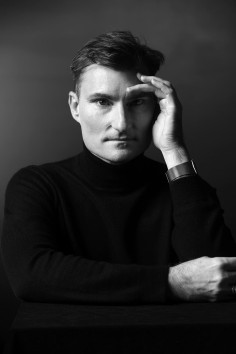
Australian Ballet takes risks to draw young audiences
The ensemble is ensuring its continued success by grooming a new generation to attract younger audiences
Guo Chengwu knows some ballet companies don't want Asian faces in their opening-night lead roles. Not, fortunately, from personal experience, but he is aware of such attitudes in some European groups.
For Guo, who is about to dance one of ballet's most demanding leading roles - Solor in - that's not an issue. He has hitched his star to a company that, in its soon-to-be-launched five-year plan, is looking to Asia. The goal is "to be the foremost company in Asia-Pacific", Australian Ballet executive director Libby Christie says. "We have a focus on China, Japan, Korea and the main cultural centres."
Australian Ballet's artistic director, David McAllister, gives everyone equal opportunity, says Guo, whose Japanese girlfriend, Ako Kondo, is a senior artist with the group.
The 25-year-old Guo was born in Jiujiang in Jiangxi province and began dancing at age 11, first in his hometown, then at the Beijing Dance Academy, one of just 30 chosen from 2,000 applicants.
A gold medal winner, he received a scholarship to train overseas after winning a prize at the prestigious Prix de Lausanne in Switzerland. He chose the Australian Ballet, joining its Ballet School in 2008. Last year he became a principal. Audiences in Hong Kong may recognise him as the young Li Cunxin from the 2009 movie , based on the memoirs of Li, also Beijing-trained, also an Australian Ballet principal much-loved by audiences, and now artistic director of the Queensland Ballet.
, in which Guo will dance a soloist role in Melbourne and Solor in Sydney, is a highlight of the 52-year-old company's five-ballet 2014 season. It is set in ancient India and tells the story of Nikiya, a temple dancer who falls in love with the warrior Solor. But tragedy strikes, until in a spectacular climax the lovers are united in death.
The ballet premiered at St Petersburg's Bolshoi Kamenny Theatre in 1877 with choreography by the legendary Marius Petipa. But it was little seen in the West until 1963 when a Royal Ballet production featured Rudolf Nureyev as Solor.

" is one of these interesting ballets because it was created in the same year as the original ," says McAllister. "But it never really made it to the West. It's a fantastic work, incredibly difficult." Particularly demanding is the white dance, in which each of the 24 veiled corps members "floats" down a long, winding ramp with 28 calf-cramping arabesques.
It is typical of the Australian Ballet to challenge itself with this demanding, classical work, says McAllister, a former dancer now in his 14th year as artistic director. "Every year we try to have a big new work, a story ballet premiere."
Its approach is also typical - not the Petipa piece, but a version by Stanton Welch, a former company dancer and son of Australian Ballet royalty, ex-principals Garth Welch and Marilyn Jones. Welch's , created in 2010 for the 40th anniversary of the Houston Ballet, has elements of Bollywood and is being promoted as exotic - with live snakes onstage. Bollywood star Pallavi Sharda, an Australian-born lawyer who followed her dream, will be in Melbourne for the opening night on Thursday.
I think the company has got to a point of maturity. It is always cyclical, you cannot maintain a constant peaking. Dancers’ careers are short; it’s not like you are going to have people there for 30 years
In keeping with the ballet's tradition of bringing its audiences international stars and sending its dancers for overseas experience, the Melbourne season features two of the Stuttgart Ballet's most popular dancers, Elisa Badenes and Daniel Camargo. In Sydney, American Ballet Theatre prima ballerina Gillian Murphy debuts with the Australian Ballet.
Kondo and Guo charmed Tokyo audiences dancing together in an international gala there recently. Principals Adam Bull and Amber Scott danced with the Shanghai Ballet this year. And the exchange programme includes a long-standing arrangement with the Hong Kong Ballet, which danced the Australian Ballet's production of in 2013.
The company - which also includes contemporary ballet in its repertoire - has been garnering accolades at home and away, including from demanding New York audiences in 2012.
"I think the company has got to a point of maturity," McAllister says. "It is always cyclical, you cannot maintain a constant peaking. Dancers' careers are short; it's not like you are going to have people there for 30 years.
"We have built a whole new generation of principals who are hitting their strides now."

"Going to places like China and anywhere in the world is quite expensive for us. Right now we are talking to companies in Australia that want to drive relationships with China or Chinese companies that have commercial relations in Australia," executive director Christie says.
"We know our performances are a fantastic way for people to demonstrate their connections to lead politicians in both countries and to forge relationships at a cultural diplomacy level. We have a five-year vision and we would like some people who want to be part of that journey," she says.
Tours are expensive for the company that, with a turnover of A$50 million (about HK$361 million), receives just 16.3 per cent of its funding from state and federal governments. Sixty-five per cent comes from box office and other commercial activities, the rest from sponsors and philanthropy.
Next year, in the programme to be announced in September, "there will be a new set in the 1940s when the music was written, with no coachmen and mice that turn into pumpkins", says McAllister.
But it also takes risks. Christie says unlike some US companies, where an annual Christmas is essential to the bottom line, sponsors take chances on new ballets. This year its triple bill included , to the music of The White Stripes.
Christie says the company is seen by about 280,000 people a year, aged from three to in their 80s. "It is quite extraordinary how broad the appeal of ballet is."
Aware of the problems ahead for some Melbourne performing arts companies with older audiences, the Australian Ballet is increasingly mounting works aimed at younger audiences "because we have a never ending stream of people who want to see the ballet", Christie says.
Guo is part of this youth-led resurgence. For him it's about the dance and the opportunities the Australian Ballet has given him. That includes bringing to Australia the parents who took second jobs to fund his seven years at the academy in Beijing when the fees were more than half their annual income.
He had danced one solo from the Solor role at the academy, but now each rehearsal reveals new facets of the character; at night he watches international ballet companies' productions on YouTube.
"I had the ambition to dance the role," he says. "I did not expect it to happen this quickly, but I always thought I wanted to do that solo somewhere, sometime. Now I get to do the main role."
